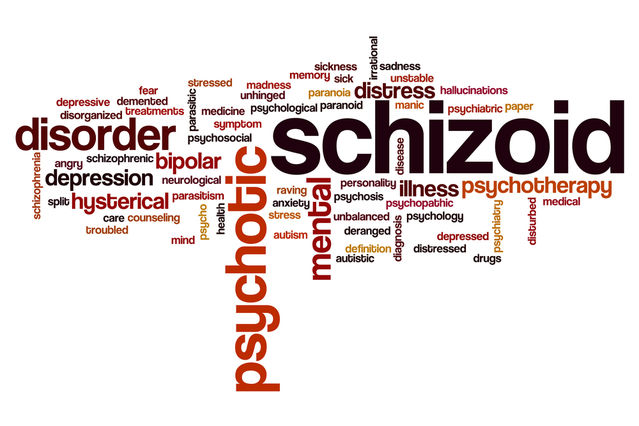Personality
Detachment in the DSM Series
DSM-I and DSM-II narrative-based diagnostic definitions are better than lists.
Posted October 1, 2019
In DSM-I (APA, 1952) there were two diagnoses characterized primarily by detachment: (a) simple schizophrenia, based on a syndrome defined by Bleuler and (b) schizoid personality, a syndrome derived from a combination of psychoanalytic and psychiatric descriptions of the personality type linked with the development of schizophrenia and overlapping considerably with the concept of simple schizophrenia (see Black & Boffeli, 1989, for a review).
Simple Schizophrenia ('schizophrenia simplex')
Also called schizophrenia simplex or simple dementia praecox, Bleuler (1924/1951) conceived of this syndrome as a subcategory of schizophrenia and identified its core characteristics as the co-occurrence of (a) social withdrawal, (b) flatness of affect, and (c) the absence of delusions and hallucinations (for a review, see Black & Boffeli, 1989; Wittman & Steinberg, 1944; see Zubin, 1985, for a review of corresponding modern-day constructs, e.g., negative symptom schizophrenia or type II schizophrenia1).

The DSM-I (APA, 1952) defined simple schizophrenia as a steady decline in interpersonal and adaptive functioning. Its salient clinical features were (a) impairment in the capacity for attachment/interpersonal relationships, (b) decreased interests, and (c) fewer social bonds (DSM-I, APA, 1952; see also Black & Boffeli, 1989, for a summary). In DSM-II, the concept of simple schizophrenia was very similar to its DSM-I version (Black & Boffeli, 1989) with its emphasis on functional decline and interpersonal detachment (DSM-II, APA, 1968; also see Black & Boffeli, 1989).
However, close scrutiny of the content of the DSM-II’s (APA, 1968) definition indicates that the description of simple schizophrenia was expanded to include indifference and apathy—the core traits of DSM-IV (APA, 1990) schizoid PD (cf. DSM-II, APA, 1968). In addition, DSM-II (APA, 1968) explicitly classified simple schizophrenia as a psychosis (i.e., as a subtype of schizophrenia) but viewed it as occupying the mildest level of severity on the continuum of psychoses (Black & Boffeli, 1989). In contrast to the Bleuler/pre-DSM III conceptualization of simple schizophrenia, Black & Boffeli (1989) reported that many in the field viewed it as a personality disorder at the severe end of the spectrum, instead of a form of psychosis, and conceptually similar to DSM-I and DSM-II schizoid personality.
Schizoid Personality Disorder

In DSM-I and DSM-II, schizoid personality was one of the severe personality patterns, a group of diagnoses clustered together because they all were marked by disturbances to the full range of personality functioning as compared to other clusters of personality disturbances, characterized by less severe or mild disturbances of a small number of traits. The DSM-I and DSM-II definitions of the schizoid personality reflected a cohesion of early descriptive psychiatry and psychoanalytic views (see, Ahktar, 1987, for a review of both perspectives). Prior literature (e.g., Bornstein, 2006; Havens, 19981; Wilson, 1993) has emphasized the psychoanalytic underpinnings of both the DSM-I and DSM-II and, as noted by Bornstein (2006), the DSM-I definition of schizoid PD reflected psychodynamic views.
Consider the DSM-I (APA, 1952) definition of Schizoid Personality below:
Inherent traits in such personalities are (1) avoidance of close relations with others, (2) inability to express directly hostility or even ordinary aggressive feelings, and (3) autistic thinking. These qualities result early in coldness, aloofness, emotional detachment, fearfulness, avoidance of competition, and day dreams revolving around the need for omnipotence.

As children, they are usually quiet, shy, obedient, sensitive, and retiring. At puberty, they frequently become more withdrawn, then manifesting the aggregate of personality traits known as introversion, namely, quietness, seclusiveness, “shut-in-ness,” unsociability, often with eccentricity. (APA, 1952, p. 35)
The DSM-I definition highlights developmental and internal, psychological processes with a focus on aggression-related dynamics, all of which are consistent with the wide-spread influence of psychodynamic theory at the time (Bornstein, 2006), as well as descriptions from early descriptive psychiatry literature (e.g., cf. Hoch, 1910). There were changes to schizoid personality in DSM-II which, as Bornstein (2006) pointed out, reflected the decreased psychoanalytic influence on psychiatric diagnosis at the time (Bornstein, 2006, pp. 340-341). Although the DSM-II definition of schizoid personality lost some of its more classical psychoanalytic roots, it still reflected an emphasis on internal dynamics.
Thus, the DSM – II (APA, 1968) defined the Schizoid Personality as follows:

This behavior pattern manifests shyness, over-sensitivity, seclusiveness, avoidance of close or competitive relationships, and often eccentricity. Autistic thinking without loss of capacity to recognize reality is common, as is daydreaming and the inability to express hostility and ordinary aggressive feelings. These patients react to disturbing experiences and conflicts with aparent detachment (APA, 1968, p. 42)
This definition lacked its previous focus on psychic causality and manifestation during different developmental phases (see Bornstein, 2006, for a related discussion). The DSM-II definition of the schizoid personality is more descriptive, emphasizing social avoidance and isolation, inhibited aggression, oddness, detachment, and autistic thinking as its core features.
Summary of Detachment in the DSM-I and DSM-II
In sum, in DSM-I and DSM-II, there existed two very similar, overlapping constructs, schizoid personality, and simple schizophrenia. Both were viewed as modern-day variants of the seclusive/shut-in and/or schizoid personality that was theoretically linked to schizophrenia and characterized by interpersonal detachment (e.g., Bleuler, 1925/1951; Hoch, 1910; Kraepelin, 1902/1912; and Kretschmer, 1925; see Ahktar, 1987; Black & Boffeli, 1980; Livesley et al., 1985; and Skodol & Gunderson, 2010, for reviews). However, in contrast to DSM-I and DSM-II schizoid personality, simple schizophrenia was defined more narrowly. Both concepts involved social isolation but simple schizophrenia was associated with functional decline and an emphasis on flat affect and indifference—similar to the current DSM version of schizoid PD (cf. DSM-IV, APA, 1990); whereas DSM-I and DSM-II schizoid personality was associated with the unhealthy inhibition of aggression, internal foci of attention, shyness, detachment, and sensitivity—similar to a combination of DSM-III (APA, 1980) and DSM-IV (APA, 1994) schizoid and avoidant PD features (cf. DSM-I, DSM-II).




